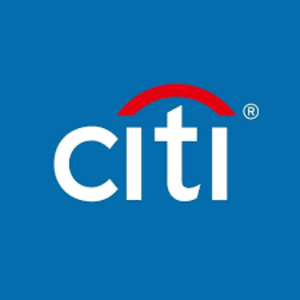When Citi rolled out its new Strata Elite credit card earlier this year, it was supposed to be the bank’s long-waited return to the premium card arena. With a $595 annual fee, lounge access, and concierge-level support, it aimed to compete head-to-head with the American Express Platinum and the Chase Sapphire Reserve. Instead, it became a disaster for the bank and, more importantly, for its customers.
According to a Wall Street Journal report, some Strata Elite customers were suddenly locked out of their accounts for weeks, unable to make purchases or redeem rewards. Citi required them to send in IRS income verification forms to reactivate their cards. All this while paying a $595 annual fee for a card that claimed to offer premium service.
One cardholder, an IT professional in Texas, described the daily ritual of opening the Citi app just to see if the bank had reactivated his card, because Citi specifically told him they would not be sending out a notification when his card became useable. Others said they were given contradictory explanations each time they called support: first a credit-limit issue, then an address problem, then something else. It’s hard to imagine a worse user experience for a premium product.
Citi’s official statement expressed regret and offered a few customers 50,000 points($50) for their troubles. But they refused to extend the qualification period to earn the 80,000 point sign-up bonus.
The card also has other issues. One new Citi cardholder that just paid for a Strata Elite card told me how confusing the card can be and discovered a big limitation when using his points for AA miles. He knew his new credit card charges would go into Citi’s “thank you” points, and knew he would have to manually transfer those “thank you” points to his existing American Airlines account to get his AA miles. When he clicked a “learn more” button, it took him out of the Citi website and brought him to the AA site where he discoverd he gets the miles but no loyalty points used for AA status. That’s a big limitation, because when you earn directly through the American Airlines credit card, you get both miles and loyalty points. He canceled his card and is trying to get his annual fee back.
Citi for years has suffered from a poor infrastructure, a terrible website, and difficult to use apps. I used to have a Citi bank business account, but always struggled to sign in, and when I did, was met with a very customer-unfriendly interface. For several years they even required I use a physical token generator to sign in. A few times, I had to run to my nearby branch to reset my password.
That’s when I moved my account to Chase, initially just for the app, one of the best I’ve come across from any company. Balances, statements, alerts, notifications, pont-tracking, benefits, etc. are all integrated into a single dashboard that works across personal and business accounts.
When my Sapphire card is declined, which happens rarely, I receive an immediate text to check if the charge is mine, and I can confirm using the phone app. The customer service lines are staffed with people who actually seem empowered to solve problems and it’s easy to reach a live person without going through an interrogation from a bot.
The great experience with Chase led me to upgrade to a Chase’s Sapphire Reserve card. Along with Amex Platimum, it’s become the gold standard among premium cards, not just because of its 3x travel and dining points or its $300 annual travel credit, but because everything just works: its website and app are fast, clear, and reliable, statements update quickly, and disputes are handled promptly.
American Express, for all its high fees, understands this as well. Its Platinum cardholders often say the annual fee is justified by peace of mind: transactions post instantly, chat support is responsive, and travel credits or claims are processed without friction. In other words, you’re paying for the experience, not just the perks.
Citi’s misfire underscores an important lesson for anyone shopping for a credit card: don’t choose a card based solely on rewards or sign-up bonuses. What matters just as much is the infrastructure—the app, the website, and the quality of customer service when something goes wrong. A generous rewards program is meaningless if your account is frozen and no one can explain why.
The same goes for how a bank handles disputes, fraud alerts, and bonus tracking. In the premium card space, reliability is what we expect and whay we pay as much as we do. Chase and Amex learned that lesson years ago; Citi, despite its marketing ambitions, clearly hasn’t, as they now are feuding with their best customers.


An eye-opening read for American Airlines Barclay card holders who will be absorbed by Citi in a few weeks. Maybe it’s time to choose another airline.